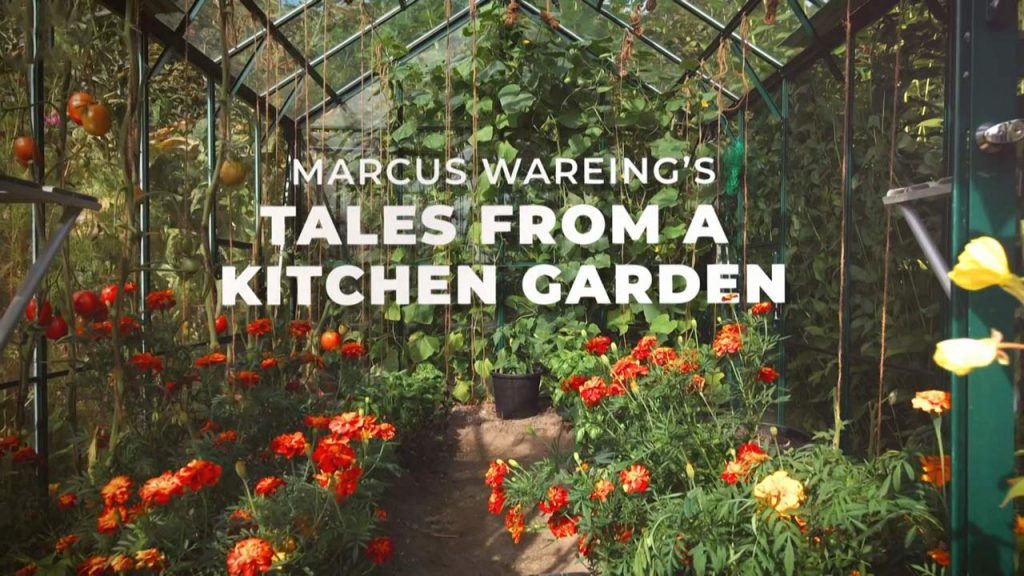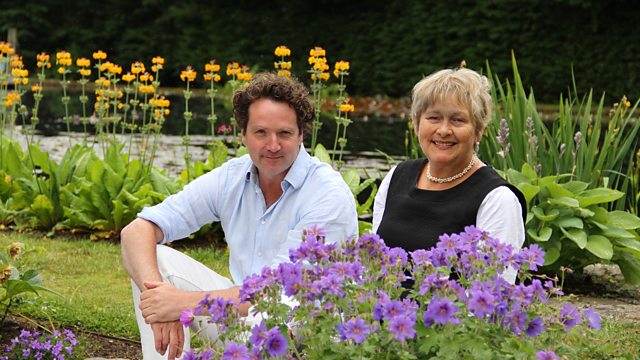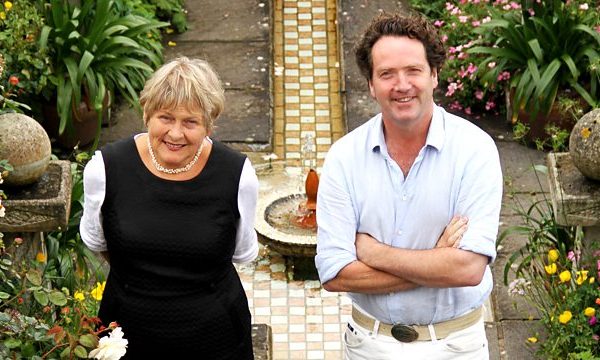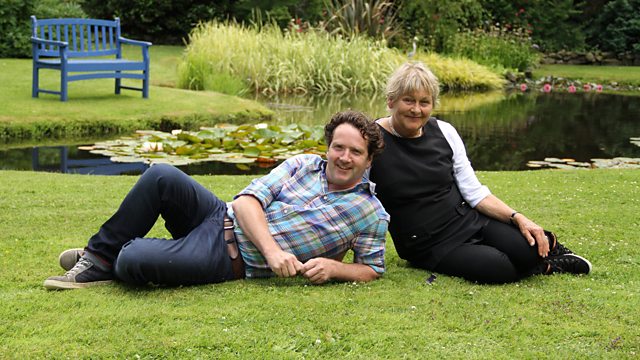Marcus Wareing’s Tales from a Kitchen Garden episode 4: In his relentless quest for culinary perfection, Marcus embarks on a journey, seeking the ideal cow to elevate his dishes. His destination? The picturesque landscapes of Shropshire, a region where history mingles with gastronomy. Here, he finds the English Longhorn, a breed that has proudly grazed the English countryside for centuries, bearing testament to the nation’s rich agricultural heritage.
Despite a rather close and intense brush with a majestic bull, Marcus remains undeterred. His perseverance pays off, and he’s rewarded with the tantalizing taste of its meat, a flavor that immediately convinces him of the Longhorn’s uniqueness.
Back at his beloved farm, Marcus’s culinary endeavors don’t stop. With passion in his heart and dirt on his hands, he meticulously harvests his very own horseradish. After days of experimentation and tasting, he crafts a horseradish sauce recipe that strikes the perfect balance between heat and flavor. While he reserves a portion in the pantry for future feasts, a generous amount is shared, epitomizing Marcus’s spirit of community. It becomes his hallmark dish at a heartwarming gathering at the village pub, where neighbors come together to relish in the fruits of their land.
The arrival of the new Longhorns on his farm calls for a jubilant celebration. And what better way to honor these magnificent creatures than with a grand meal, where beef, rich in taste and tradition, stands as the star of the table.
Marcus Wareing’s Tales from a Kitchen Garden episode 4
Marcus Wareing (born 29 June 1970) is an English celebrity chef who is currently Chef-Owner of the one-Michelin-starred restaurant Marcus (formerly Marcus Wareing at the Berkeley) in Knightsbridge. Since 2014, Wareing has been a judge on MasterChef: The Professionals, following the departure of Michel Roux Jr. from the programme.
Wareing first worked at the Savoy Hotel under chef Anton Edelmann in 1988 at the age of 18 where he was employed as a commis chef, before leaving in 1993 to join Albert Roux at Michelin starred Le Gavroche where he first met Gordon Ramsay. Stints at other restaurants in New York City, Amsterdam and at Gravetye Manor in Sussex followed. Wareing joined Gordon Ramsay’s Aubergine when it opened in 1993, where he became Sous Chef behind Head Chef Ramsay and would go on to work with him over the course of the following 15 years, which led to Wareing being called Ramsay’s protégé. While he was at Aubergine in 1995, Wareing was awarded the title of Young Chef of the Year by the Restaurant Association.
He would later credit Ramsay with teaching him to cook, describing it as “the most important time in my life”. He left Aubergine for a year in 1995 to work with Daniel Boulud in America, and Guy Savoy in France. His return to the UK was also to be his first head chef role, of new restaurant L’Oranger, which was owned by A-Z Restaurants, which had also owned Aubergine, with stakes held by both Wareing and Ramsay. At the age of 25 he earned his first Michelin star as head chef whilst at L’Oranger. He gave Angela Hartnett her first job in a restaurant.
Kitchen garden
The traditional kitchen garden, vegetable garden, also known as a potager (from the French jardin potager) or in Scotland a kailyaird, is a space separate from the rest of the residential garden – the ornamental plants and lawn areas. It is used for growing plants for eating, flavouring food, and often some medicinal plants, especially historically. The plants are grown for use by the owner and their household, though some seasonal surpluses are given away or sold; a commercial operation growing a variety of vegetables is a market garden (or a farm). The kitchen garden is different not only in its history, but also its functional design. It differs from an allotment in that a kitchen garden is on private land attached or very close to the dwelling. It is regarded as essential that the kitchen garden could be quickly accessed by the cook.
Historically, most small country gardens were probably mainly or entirely used as kitchen gardens, but in large country houses the kitchen garden was a segregated area, normally rectangular and enclosed by a wall or hedge, walls being useful for training fruit trees as well as offering shelter from wind. Such large examples very often included greenhouses and furnace-heated hothouses for more tender delicacies, and also flowers for display in the house; an orangery was the ultimate type.
In large houses, the kitchen garden was typically placed diagonally to the rear and side of the house, not impeding the views from the front and rear facades, but still quick to access. In some cases, hardy flowers for cutting were grown outside there, rather than in the flower garden. A large country house hardly expected to buy any vegetables, herbs or fruit, and the surplus was often distributed as presents; the walled example at Croome Court in England covers seven acres, and the gardens have a large “Temple Greenhouse”, an orangery in the form of a Roman Temple.
Beef rib with honey and ale glaze, green sauce – Marcus Wareing’s recipe
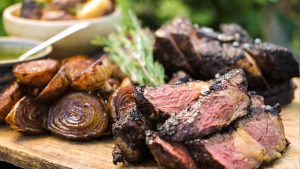
Rib-eye steaks are cut from the forerib of beef, but here they are cooked on the bone with a honey and ale glaze. A herby green sauce, jacket potatoes and blackened onions complete Marcus Wareing’s barbecue dinner party – a real treat for special friends.
Method:
- Crush all the spice rub ingredients together using a pestle and mortar. Rub all over the meat and leave to marinate for about 20 minutes.
- Light the barbecue. Allow the flames to flare up and die down, then wait until the coals are glowing.
- Wrap the potatoes in a large piece of foil with the butter and a good pinch of salt and pepper. Place the potatoes directly on the coals and stack some hot coals on top of the foil so the potatoes cook all the way through.
- Place the onions cut-side down on the barbecue grill for about 10 minutes until blackened.
- To make the glaze, put all the ingredients in a pan over a medium–high heat and boil for about 10 minutes to reduce to a sticky consistency. Put the blackened onions into the pan of glaze and set aside.
- Place the beef on the barbecue and cook for about 25 minutes on each side, turning occasionally until nicely charred all over.
- Brush the glaze over the beef and keep turning it and brushing with glaze for 3–4 minutes, until it is coated and sticky all over. To test that the meat is cooked, insert a digital cooking thermometer into the thickest part of the meat: it should read 58–60C. Place the meat on a tray to rest for at least 15 minutes.
- While the meat is resting, make the green sauce by blending all the ingredients together.
- Check the potatoes by piercing the foil with a knife: if they are soft, they are ready.
- Place the meat on a large serving platter with the potatoes, onions and green sauce.
